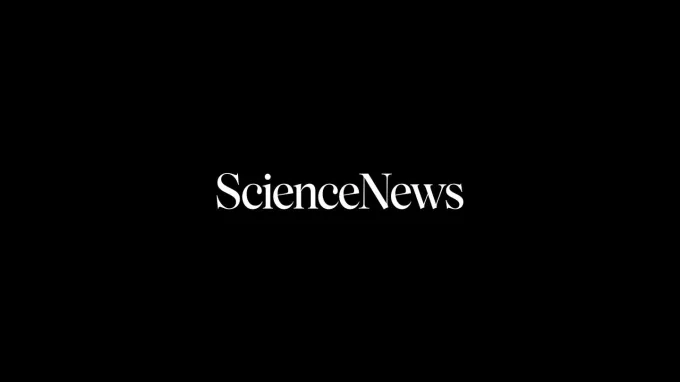Science News Magazine: Current Issue
Vol. 170 No. #13
Trustworthy journalism comes at a price.
Scientists and journalists share a core belief in questioning, observing and verifying to reach the truth. Science News reports on crucial research and discovery across science disciplines. We need your financial support to make it happen – every contribution makes a difference.
More Stories from the September 23, 2006 issue
-
 Tech
TechA thin laser gets thinner
Researchers have created a microchip laser that fires an extraordinarily thin beam of high-intensity light.
By Peter Weiss -
 Anthropology
AnthropologyNeandertal debate goes south
A controversial report concludes that Neandertals lived on southwestern Europe's Iberian coast until 24,000 years ago, sharing the area for several thousand years with modern humans before dying out.
By Bruce Bower -
 Health & Medicine
Health & MedicineProgestin linked to hearing loss in older women
Elderly women who received progestin as part of hormone replacement therapy have poorer hearing than do women who didn't get progestin.
By Nathan Seppa -
 Planetary Science
Planetary ScienceMartian doings
The Mars Reconnaissance Orbiter has finished reshaping its orbit, while the venerable rover Opportunity is approaching the rim of the widest and deepest crater it has yet visited.
By Ron Cowen -
 Health & Medicine
Health & MedicineShingles shot’s value is uncertain
The cost-effectiveness of a new vaccine against shingles remains uncertain, making it difficult to assess whether adults should routinely receive the shot.
By Ben Harder -
 Planetary Science
Planetary ScienceSMART stop
The European Space Agency's first mission to the moon ended with a deliberate bang on Sept. 3.
By Ron Cowen -
 Tech
TechStart your engines
Mechanical engineers have developed a system that greatly decreases the amount of toxic hydrocarbons a car releases.
By Eric Jaffe -

Mood disorder cuts work performance
A national survey finds that people with bipolar disorder lose even more workdays each year as a result of their illness than do workers with major depression.
By Bruce Bower -
 Anthropology
AnthropologyEvolution’s Child: Fossil puts youthful twist on Lucy’s kind
Researchers have announced the discovery of the oldest and most complete fossil child in our evolutionary family yet found.
By Bruce Bower -
 Health & Medicine
Health & MedicineGraveyard Shift: Prostate cancer linked to rotating work schedule
Men who alternate between daytime and nighttime shifts on their jobs have triple the normal rate of prostate cancer, according to a Japanese nationwide study.
By Ben Harder -
 Astronomy
AstronomyEnigmatic Eruptions: Gamma-ray bursts lack supernova fireworks
The most powerful bursts in the universe may have gotten more mysterious.
By Ron Cowen -
 Health & Medicine
Health & MedicineUV Blocker: Lotion yields protective tan in fair-skinned mice
A lotion that stimulates production of the skin pigment melanin induces a deep tan in specially bred laboratory mice.
By Nathan Seppa -
 Animals
AnimalsCrickets on Mute: Hush falls as killer fly stalks singers
Within just 5 years, singing has nearly died out among a population of cricket on a Hawaiian island.
By Susan Milius -
 Paleontology
PaleontologyFlying with Their Legs: Hind feathers made primitive bird nimble
The earliest-known bird had feathers on its legs that may have provided lift for flight, improving its maneuverability.
-
 Tech
TechLong-Sought Laser? Standard microchips may gain speedy optical connections
Although not made exclusively of silicon, a new type of laser runs on electricity and could be mass manufactured in the same factories as silicon microchips are.
By Peter Weiss -
 Health & Medicine
Health & MedicineCalling Death’s Bluff
New methods of assessing a person's risk of sudden death due to a heart arrhythmia may enable doctors to better identify which patients need to receive an implanted defibrillator.
By Ben Harder -
 Astronomy
AstronomyTemperamental Monsters
A new theory suggests that many huge stars undergo outbursts during which they shed most of their mass late in life rather than doing it gradually over their 3-to-4-million-year lifetimes.
By Ron Cowen -
 Humans
HumansLetters from the September 23, 2006, issue of Science News
Moo juiced? I live in Northern California, where forest-biomass power plants are common (“Radiation Redux: Forest fires remobilize fallout from bomb tests,” SN: 7/15/06, p. 38). One power plant takes the ashes that result and places them where cows forage. I’m wondering to what level of concentration this process will accumulate the cesium in organic […]
By Science News
